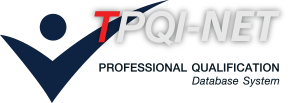หน่วยสมรรถนะ
Perform aircraft flight servicing.
สาขาวิชาชีพการบิน
รายละเอียดหน่วยสมรรถนะ
| 1. รหัสหน่วยสมรรถนะ | AVT-TSJN-209A |
| 2. ชื่อหน่วยสมรรถนะ | Perform aircraft flight servicing. |
| 3. ทบทวนครั้งที่ | / |
| 4. สร้างใหม่ |
|
ปรับปรุง |
|
| 5. สำหรับชื่ออาชีพและรหัสอาชีพ (Occupational Classification) | |
|
7232 Aircraft engine mechanics and fitters |
|
| 6. คำอธิบายหน่วยสมรรถนะ (Description of Unit of Competency) | |
| This skill unit requires the use of the skills of the labor standards and business practices in the implementation of pre- and post-flight maintenance and application handling procedures on aircraft on both fixed wing aircraft and rotating. | |
| 7. สำหรับระดับคุณวุฒิ |
| 1 | 2 | 3 | 4 | 5 | 6 | 7 | 8 |
|---|---|---|---|---|---|---|---|
| 8. กลุ่มอาชีพ (Sector) | |
| 7232 Aircraft Mechanics | |
| 9. ชื่ออาชีพและรหัสอาชีพอื่นที่หน่วยสมรรถนะนี้สามารถใช้ได้ (ถ้ามี) | |
| N/A | |
| 10. ข้อกำหนดหรือกฎระเบียบที่เกี่ยวข้อง (Licensing or Regulation Related) (ถ้ามี) | |
| ICAO Doc 7192 / EASA Part 66 | |
| 11. สมรรถนะย่อยและเกณฑ์การปฏิบัติงาน (Elements and Performance Criteria) |
| หน่วยสมรรถนะย่อย (EOC) | เกณฑ์ในการปฏิบัติงาน (Performance Criteria) | รหัส PC (ตามเล่มมาตรฐาน) |
รหัส PC (จากระบบ) |
|---|---|---|---|
| 101312.01 Inspect aircraft and systems, and prepare for flight. |
101312.01.01 Aircraft is positioned as required. Ground locks, aircraft support and safety devices and covers are removed and stowed in accordance with maintenance documentation. Aircraft tie-down devices are removed and stowed/stored. |
101312.01.01 | 199077 |
101312.01.02 Aircraft and systems are visually or physically checked for external signs of defects in accordance with maintenance documentation while observing all relevant work health and safety (WHS) requirements. |
101312.01.02 | 199078 | |
| 101312.02 Replenish aircraft systems. |
101312.02.01 Fluid level checks and replenishments are carried out in accordance with maintenance documentation requirements while observing all relevant WHS requirements, including the use of material safety data sheets (MSDS) and items of personal protective equipment (PPE). |
101312.02.01 | 199079 |
101312.02.02 Maintenance of gaseous levels (nitrogen and compressed air) is carried out in accordance with maintenance documentation requirements while observing all relevant WHS requirements. |
101312.02.02 | 199080 | |
101312.02.03 Required maintenance documentation is completed and processed in accordance with standard enterprise procedures. |
101312.02.03 | 199081 |
| 12. ความรู้และทักษะก่อนหน้าที่จำเป็น (Pre-requisite Skill & Knowledge) | |
|
101301 Interpret work health and safety practices in aviation maintenance |
|
| 13. ทักษะและความรู้ที่ต้องการ (Required Skills and Knowledge) | |
|
(ก) ความต้องการด้านทักษะ ICAO Doc 7192 / EASA Part 66 Module: 4.Electronic Fundamentals (ข) ความต้องการด้านความรู้ ICAO Doc 7192 / EASA Part 66 Module: 4.Electronic Fundamentals |
|
| 14. หลักฐานที่ต้องการ (Evidence Guide) | |
|
(a) Performance Evidence (b) Knowledge Evidence |
|
| 15. ขอบเขต (Range Statement) | |
|
This field allows for different work environments and conditions that may affect performance. Essential operating conditions that may be present (depending on the work situation, needs of the candidate, accessibility of the item, and local industry and regional contexts) are included. Maintenance documentation includes: Procedures and requirements include: |
|
| 16. หน่วยสมรรถนะร่วม (ถ้ามี) | |
| N/A | |
| 17. อุตสาหกรรมร่วม/กลุ่มอาชีพร่วม (ถ้ามี) | |
| N/A | |
| 18. รายละเอียดกระบวนการและวิธีการประเมิน (Assessment Description and Procedure) | |
|
• The assessment are compose of paper exams , interviews, and practical demonstrations, which the paper exam is the main testing. The selection of interviews and practical demonstrations are depending on the assessors’ judgment. |
|
